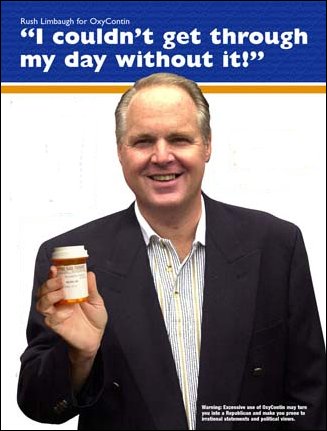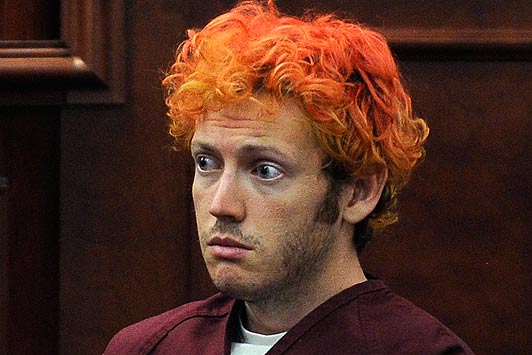
“Insane” has a clear meaning when we can look at it next to “sane” in the real world. Unfortunately, that has become more and more difficult to do, says Mike Bartos, former chief of staff at an American state psychiatric hospital for the criminally insane.
“It’s not just because the media rely so much now on bizarre behavior to entertain their audiences,” says Bartos, author of “BASH” – Bay Area State Hospital – (www.mikebartos.com), a fast-paced tongue-in-cheek novel that stems from his decades of experience as a mentalhealth-care professional.
“Take a look at what have become the ‘normal’ problems in modern America – some of them could be textbook examples of psychological dysfunction.”
Case – or rather, cases – in point:
• Obesity epidemic: Denial, compulsion, addiction and sublimation are just a few mechanisms at work in the psychology of a largely obese population. Sublimation is the mature defense activity perpetrated when socially unacceptable impulses, such as sexuality, are redirected, in this case to the consumption of salty, fatty and sugary food. With more than two thirds of the U.S. population and almost two thirds of the Canadian population [http://tinyurl.com/78o9z66 CP] either overweight or obese, there is nothing sane about this health crisis.
• Banking: The financial crisis that changed the world in 2008 can be largely owed to a cluster of “too big to fail” U.S. banks and their employees who thought they could continuously repackage terrible debt loans. Meanwhile, unqualified customers snatched up properties they couldn’t afford. This was an undiagnosed mega-scale gambling addiction. Many in the financial world knew it simply could not be sustained but the players continued to ante up.
• Climate change: Denial, denial, denial. The raw data from objective scientists overwhelmingly tells us man is largely responsible for warming global temperatures, yet we continue to use fossil fuels and to fill landfills with methane-producing waste. It’s a classic case; we completely ignore symptoms and evidence to maintain the status quo.

• A drugged nation: Marijuana, a natural relaxant, is outlawed in most states while tobacco and alcohol – responsible for incalculable violence and sickness, as well as tens of thousands of accidents and deaths each year – are lucrative and legal vice industries. Meanwhile, some pharmaceutical companies and physicians encourage substance abuse and chemical dependency by promoting pills to ease the inevitable emotional and physical pains that come with life.
“Many of my psychiatric patients suffered from addiction to both legal and illegal drugs. Sometimes it was hard to tell which came first, the addiction or the other mental health issues,” Bartos says.
“The legal or illegal status of certain drugs seems to be completely arbitrary — much like the behavior of a patient suffering psychosis,” he says.

• Spoiled-brat adults: Narcissistic Personality Disorder isn’t only now accepted in society, it’s widely encouraged and celebrated, Bartos says. Reckless driving and road-rage are just two examples in which individuals are so self-absorbed, they believe their time and sense of entitlement are more important than the lives and safety of others. Throw on top of that our obsession with plastic surgery, need for constant attention on social media, and pre-occupation with consumer brands and we have pandemic megalomania.
• War: America [with on again -off again support from allies such as Canada,England and NATO allies CP] has been at war for 10 years now, and leaders cannot say with any precision what the US is doing with its current campaign in Afghanistan, nor what was accomplished with the last one in Iraq. It’s as if government leaders have a masochistic, sociopathic relationship with one percent of the U.S. population – the military, and their families. Young men are shipped off in the prime of their health, and often return physically or mentally damaged, if they come back at all.
“Is this sane?” Bartos asks.
Mike Bartos is currently in private psychiatric practice in the San Francisco Bay Area where he lives with his wife Jody. He has several decades of experience in the mental health field, including serving as chief of staff at a state hospital for mentally ill patients convicted of violent crimes, where he focused on forensic psychiatry. Bartos is a former radio show host and newspaper columnist. For the Silo, Ginny Grimsley.
Supplemental- Oxycontin and the opium epidemic of the 21st century

A commitment to mental health is long overdue
Health Canada recently announced it will provide Ontario with an additional $4.2 billion in health funding. Of those funds, $2.3 billion is for better home care and homecare infrastructure requirements. The remainder, $1.9 billion, is for mental health initiatives.
The Official Opposition has asked the Wynne government to match the funding; however, both Ontario’s government and third party have rejected the idea. Sadly, this will keep Ontario in a mental health crisis. Here’s why.
As the number of children suffering from mental illness increases, so does the cost. Children’s mental health centres across the province are underfunded and have been for years. This means services and treatment become harder and harder to receive, as the balance between demand and availability become further and further apart.
Families in desperation seek help in the emergency rooms of local hospitals — another costly move. Hospitals are not necessarily equipped for these visits. Over the past 10 years, children’s visits to emergency rooms and the rate of hospitalization have increased over 60 per cent. This costs government millions of dollars, and is not as effective as the much lower cost treatment of community-based children’s mental health centres.
One in five people will experience mental illness this year. The majority of people treated in an Ontario emergency room after a suicide attempt do not see a psychiatrist within six months.
Of all children who try to access mental health treatment, more than 40 per cent are unable to access the treatment they need. With statistics like these, how can government not see the benefits of investing to address this issue?
We hear how this government has invested millions of dollars, but that money has not gone to frontline care. While thirty-nine cents of every dollar went to CCACs – the Community Care Access Centres — the base funding at direct treatment centres was frozen.
This government continually talks about the money they have invested, but there are no measured results. If anything, the apparent results have been increased bureaucracy. We have gone from five assistant deputy ministers to over 20 assistant deputy ministers. Our bureaucracies in the LHINs – the Local Health Integration Networks — have grown to 84 sub-LHINS.
The substantial increase shows that we are not doing enough. How can you deny the children who are our future the proper care they need to help fight mental health issues?
Teachers and trustees in our local communities are also raising concern over the growing mental health crisis in our schools. There is agreement the growing mental health needs of students is the most significant challenge in our schools and communities today.
Students suffering from mental health issues need a comprehensive approach to mental health services and programs. It is time for Ontario to replace fragmented mental health services with a better-coordinated approach that helps our most vulnerable, particularly students. It is time the mental health issues in the classroom and beyond get the same attention and prioritization as physical health
The federal government made a 10-year, $1.9 billion commitment to mental health in Ontario as part of their most recent health transfer agreement with the province.
It is now time to match that federal commitment.
Toby Barrett MPP for Haldimand-Norfolk
Mental health must be treated the same as physical health
In almost every city the committee heard about the impacts of mental health on people in Ontario. It is clear the government is not doing enough to support children and youth mental health issues. Presenters stressed mental health must be treated the same as physical health.
Mental illness is the leading cause of disability in Canada, and its economic burden is estimated at $51 billion a year.
Mary-Anne Leahy of the New Mentality, a provincial network of youth with mental illness, presented this information to the Finance Committee. She knows about mental health problems first-hand. Her 37-year-old brother has mental health problems. His parents tried to get assistance when he was 12, but were not successful. As a result, he has been unable to keep a job for more than a few months and struggles with meaningful relationships. In her job she still hears this today.
“I don’t understand why people fighting to stay alive also have to fight to get treatment in Ontario,” she said to the committee.
Kim Moran, CEO of Children’s Mental Health Ontario, spoke about her daughter having suicidal thoughts. After trying to get help, she was told to wait until her daughter made an attempt on her life before there would be help.
“It doesn’t make any sense,” she said. “It would be like saying to a kid with cancer, ‘Wait until it spreads all over your body before we get help for you’. It’s unacceptable, and all of us should be outraged by that.”
Moran presented some other startling facts:
* A quarter of Ontario youth report missing school from anxiety.
* A third of parents take time off work to help their children with mental health issues.
* More than 40 per cent of youth who try to access mental health treatment can’t access the treatment they need.
There was a 67 per cent increase in hospital stays for young people with mental health in the last decade. This costs the province $190 million every year, and is increasing. Government has cut spending to community health agencies by over 50 per cent in the past 25 years.
The solution isn’t easy, but there are ways forward.
For example, in our area the Catholic Women’s League has been championing the cause with a postcard campaign calling for more funding for suicide prevention.
The Official Opposition is proposing to spend $1.9 billion in the province’s mental health system — the largest mental health commitment in Canadian history.
The investment must be comprehensive and multifaceted, targeting several programs.
People with mental health issues take up a large amount of time for police officers. Expanding the Crisis Outreach and Support Team pilot project, that teams plain clothes police officers with mental health workers, would help.
More investment in the Alzheimer Society of Canada’s First Link program could assist those diagnosed with dementia.
Targeted investments can reduce wait times for young people, including funding for schools and post-secondary institutions.
This could be part of the answer to the important question, posed by Leahy, “How many more youth have to die before the government does something about it and ensure that children and youth get the treatment they need as soon as they need it?”
Mental health issues were raised at pre-budget hearings
As Haldimand-Norfolk MPP, I recently weighed in on the importance of investing in mental health following testimony at the Finance Committee’s pre-budget hearings.
The Windsor-Essex branch of the Canadian Mental Health Association proposed an increase to base budgets to address cost pressures and inflationary increases. During testimony, their deputation requested “fund mental health in the same manner as funding physical health.”
These funding requests aren’t surprising since one in five Canadians experience a mental health or addition problem.
It’s time we build on existing mental health programs in Ontario. We advocate more investment into children’s mental health services.
Ontario’s Opposition recently pledged to invest $1.9 billion into mental health. This would be the largest investment in mental health in the province’s history.
For more information, contact me MPP Toby Barrett at 519-428-0446 or toby.barrett@pc.ola.org Please mention The Silo when contacting.
Gambling is also a major international commercial activity, with the legal gambling market totaling an estimated $335 billion in 2009.In other forms, gambling can be conducted with materials which have a value, but are not real money. For example, players of marbles games might wager marbles, and likewise games of Pogs or Magic: The Gathering can be played with the collectible game pieces (respectively, small discs and trading cards) as stakes, resulting in a meta-game regarding the value of a player’s collection of pieces.^^
Bye for now
<http://healthmedicinelab.com/
Integrate mental health and addictions into the system
The brain is the most complex organ in the human body, and health conditions affecting the brain can by among the most debilitating and challenging. Yet mental health and addiction has for too long been treated as an afterthought in our health system.
Ontario must confront the human and economic toll of mental illness and addiction by taking down barriers to compassionate and effective treatment. Mental health is as important as physical health. It’s time we treated it that way.
Mental illness, including depression and anxiety, affects 20 per cent of teenagers before age 18. That’s around half a million young Ontarians wrestling with these issues everyday. Sadly, suicide is the second leading cause of death in young people aged 15 to 24. One in five Canadians will experience a mental illness in their lifetime. The remaining four have a friend, family member or colleague who will.
As for addiction, it’s not just a big city problem. I regularly hear about the misuse of narcotic analgesics like oxycodone here in our riding.
The total lifetime cost of caring for one person with untreated mental illness has been estimated at $1.5 million. Further, economist Don Drummond reported in 2012 the economic costs of mental health and addiction in Ontario are $39 billion per year.
Lack of integration is a critical issue for our health system, but nowhere is it more evident than in mental health and addiction. Mental health and addiction services are scattered over 10 ministries, 440 children’s mental health agencies, 330 community agencies, 150 addiction agencies and 50 problem gambling centres.
Four years ago, Ontario’s Auditor General referred to accountability-related concerns such as lack of coordination and collaboration and a lack of information about quality and quantity with respect to child and youth mental health services.
He also expressed concern about the lack of consistency in the practices of community mental health providers, the autonomy with which child mental health providers operate and the resulting patchwork of services.
In my constituency office we hear too often from families who are attempting to navigate the system for a loved one. In many cases the patient sees three or four different professionals, which seems great at first blush until each of them start prescribing treatment without talking to one another.
It’s time to recognize children’s mental health as a part of the health care system, whereas today it falls under the Ministry of Children and Youth Services. To learn more, visit http://ontariopc.uberflip.com/i/103088 Paths to Prosperity: A Fresh Start for Children and Youth.
Last week the Official Opposition released the most recent white paper Paths to Prosperity: A Healthier Ontario. This white paper builds on the findings of an all-party select committee which heard about people’s inability to obtain age-appropriate services close to home, long waiting lists and long lapses between assessment and treatment. Clients are sometimes restricted from accessing services provided outside their home area.
Throughout the province we have a wealth of knowledge and experience in the field of mental health and addictions. However, we are not listening to experts and organizing our resources effectively.
Ontario needs a 21st century model of care that is proactive and based on integration, chronic disease management, disease prevention and health promotion,with all decisions based on objective evidence.
Haldimand-Norfolk MPP Toby Barrett